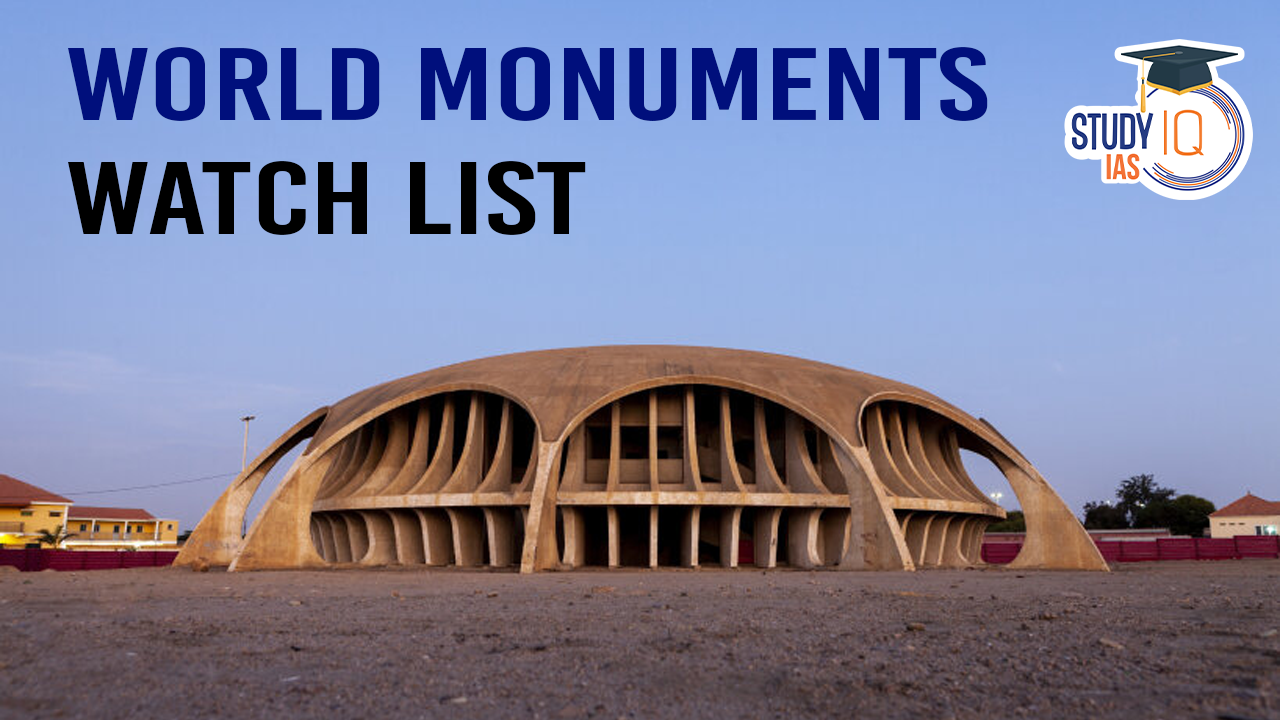Table of Contents
The World Monuments Watch (WMF) 2025 list highlights 25 of the world’s most at-risk cultural heritage sites. For the first time, this list includes sites beyond Earth’s surface, marking a pivotal moment in the program’s 30-year history. The 2025 list features an impressive range of landmarks facing significant threats due to climate change, war, tourism, and natural disasters. The inclusion of outer space—specifically the Moon—underscores the global need for proactive and cooperative strategies to protect our shared cultural heritage.
World Monuments Watch
The World Monuments Fund (WMF) is a leading global nonprofit organization dedicated to preserving cultural heritage worldwide. Since 1996, the WMF’s biennial Watch program has served as a powerful platform to raise awareness about endangered heritage sites and drive the funding and advocacy needed to protect them. Each edition of the Watch list spotlights cultural and natural landmarks at risk and supports them in securing critical preservation efforts.
With the 2025 edition, the organization continues to champion endangered heritage while introducing new insights into preservation challenges, especially with regards to climate change, conflict, and rapid urban development.
Key Sites Included in the 2025 Watch List
| Site Name | Location | Threats | Significance |
|---|---|---|---|
| Musi River Historic Buildings | Hyderabad, India | Urbanization, climate change, environmental degradation | Includes historical landmarks like Osmania General Hospital and City College, reflecting the city’s colonial legacy |
| Kyiv Teacher’s House | Kyiv, Ukraine | Conflict, war damage | An educational and cultural hub with historical importance, severely damaged by the ongoing conflict with Russia |
| Gaza’s Historic Urban Fabric | Gaza, Palestine | Conflict, destruction due to war | Represents the rich history of Gaza, with many ancient structures damaged or destroyed due to ongoing conflict |
| The Moon (Apollo 11 Landing Site) | Outer Space (Moon) | Commercial exploitation, potential looting | Historic site where the first human landing took place in 1969, at risk of damage due to increasing space activities |
| Qhapaq Ñan (Andes Road System) | Argentina, Bolivia, Chile, Colombia, Ecuador, Peru | Environmental degradation, development pressures | Ancient pre-Hispanic road system spanning six South American countries, essential to understanding the region’s cultural history |
| Swahili Coast | East Africa (Zanzibar, Lamu, etc.) | Rising sea levels, climate change | Coastal cities with rich Islamic architectural heritage, threatened by rising sea levels and storms due to climate change |
| The Great Trading Path | Virginia, North Carolina, USA | Urbanization, environmental degradation | Historic Indigenous trail system connecting Virginia and North Carolina, essential for understanding Native American trade networks |
The Role of World Monuments Fund in Heritage Preservation
The World Monuments Fund’s role in preserving cultural heritage goes beyond simply identifying at-risk sites. The organization works closely with local communities, governments, and other stakeholders to design tailored preservation plans that address the unique challenges each site faces. This may include securing funding, advocating for legal protection, and developing sustainable tourism strategies to ensure long-term preservation.
For example, the WMF has already raised significant funds for previous Watch sites, facilitating the restoration of many cultural landmarks around the world. In 2025, the organization has allocated $2 million to support preservation projects and will continue its fundraising efforts to meet the needs of the nominated sites.
Key Threats to Cultural Heritage
The 2025 World Monuments Watch provides crucial insights into the primary threats facing cultural heritage sites globally. These threats include:
- Climate Change: Rising sea levels, storm surges, and extreme weather events are endangering coastal sites like the Swahili Coast and historic lighthouses in Maine, USA.
- Conflict and War: Ongoing conflicts in regions like Ukraine and Gaza have destroyed critical cultural landmarks, underscoring the role of heritage in recovery efforts.
- Tourism Pressure: Popular sites like Maijishan Cave Temples in China are grappling with tourism that exceeds the capacity of their infrastructure, leading to wear and tear on ancient structures.
- Urbanization and Development: Rapid growth and urban sprawl threaten heritage sites like the Musi River Historic Buildings, which face pressure from modern development.
Conclusion
The 2025 World Monuments Watch serves as a critical reminder of the fragility of our cultural heritage and the urgent need for concerted preservation efforts. From historic buildings along the Musi River in Hyderabad to the iconic Apollo 11 landing site on the Moon, these sites represent humanity’s shared history and collective identity. The Watch list not only raises awareness but also mobilizes resources and advocacy to protect these irreplaceable landmarks for future generations. It is a call to action for individuals, governments, and organizations to come together and ensure that our cultural heritage is safeguarded against the threats of climate change, conflict, tourism, and neglect.
Don’t miss out on the opportunity to learn from the best. StudyIQ’s UPSC Optional Live Batches are filling up fast! Ensure your spot and start your UPSC preparation journey with expert guidance and a community of like-minded aspirants. Contact us now to reserve your seat and begin your journey toward success!


 Places in News for UPSC 2025 for Prelims...
Places in News for UPSC 2025 for Prelims...
 New Phase of Operation Chakra to Combat ...
New Phase of Operation Chakra to Combat ...
 Soyuz Aircraft: History, Design and Sign...
Soyuz Aircraft: History, Design and Sign...





















